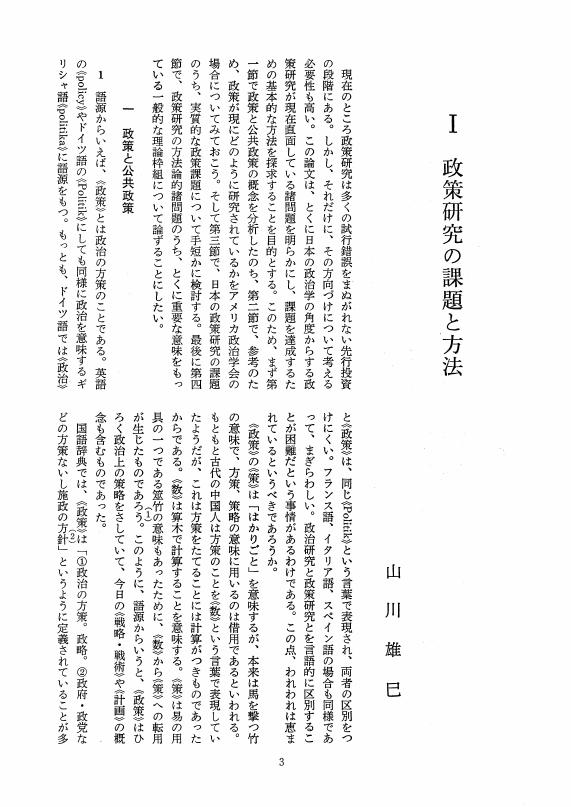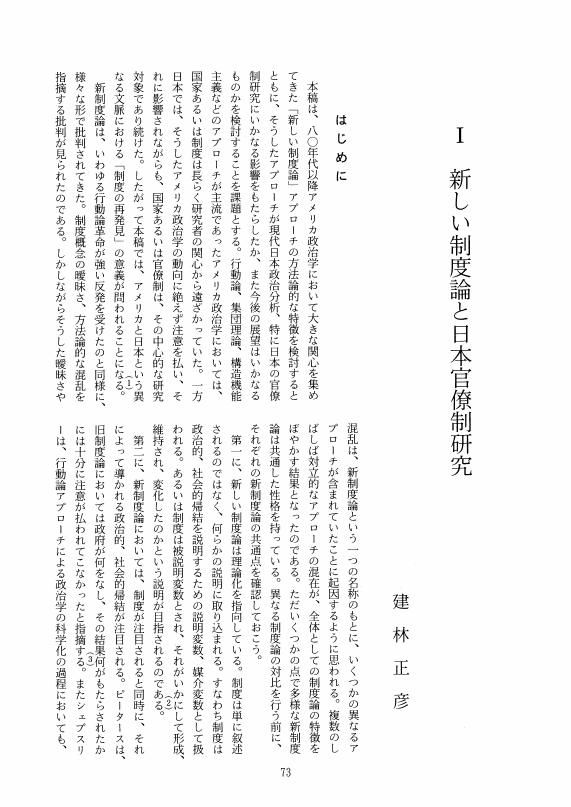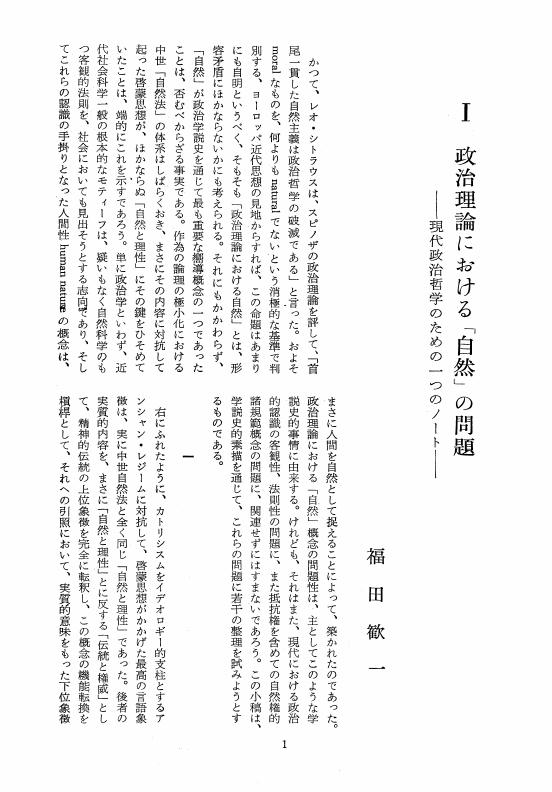2 0 0 0 OA 現代グアテマラにおける政治暴力の変容
- 著者
- 狐崎 知己
- 出版者
- JAPANESE POLITICAL SCIENCE ASSOCIATION
- 雑誌
- 年報政治学 (ISSN:05494192)
- 巻号頁・発行日
- vol.60, no.2, pp.2_87-2_107, 2009 (Released:2013-02-07)
The Commission on Historical Clarification in Guatemala (CEH) organized by the United Nations based on the Peace Agreement signed by the Guatemalan Government and the URNG, recognized that the Army and other agents of the Guatemalan State, inspired by the Doctrine of National Security, committed acts of genocide against the Maya people. The CEH named three mutually-dependent “structural” or “historical” causes of genocide: economic exploitation, racism and political authoritarianism. In this article, the analytical framework composed by the combination of four types of violence, (1) Direct political, (2) Structural, (3) Symbolic, and (4) Everyday forms of violence, is used to find out the continuing structure of the state violence which lead to genocide, as well as the changing forms and expressions of the political violence in the aftermath of genocide, focusing on the political impact of the act of “naming genocide” and the “privatization of the violence.”
2 0 0 0 平和の政治学
- 著者
- 関 寛治
- 出版者
- 日本政治学会
- 雑誌
- 日本政治學會年報政治學 (ISSN:05494192)
- 巻号頁・発行日
- vol.27, pp.91-120,en6, 1976
The history of Peace Research in Japan should be analyzed not only in terms of development of pure peace science, but also in terms of the politics of peace in post-war Japanese history. The origins of peace research in Japan go back to the 1948 statement by eight UNE SCO social scientists. The statement immediately inspired Japanese intellectuals to form “The Peace Problems Discussion Circle” by which was covered the monthly Journal <i>Sekai</i> published by Iwanami Shoten. The strength of the 1948 UNESCO statement, attracted the attention of Japanese intellectuals who participated in the monthly <i>Sekai</i> forum from the beginning of 1949 to the end of 1960. Their objective was to oppose the cold war strategy of the super-powers. Among all statements, “On Peace for the Third Time, ” which was originally drafted by Masao Maruyama, was especially notable for the scope and depth of its analysis of world politics and for its high analytic quality as an example of clinical-type peace research. Because of the long-term value of its penetrating insights into the nuclear age, this essay has acquired great meaning for the present stage of research development in the mid-1970's.<br>According to the author, “On Peace for the Third Time” was singled out not only for its illuminating qualities, and the strength of its clinical evaluation of post-war international society, but for its sensitivity to the original spirit of peace as well. On the other hand, the development of basic peace research in Japan fell completely behind in comparison with its American and European counterparts in the process of institutionalizing peace reseach. In this article, the reasons for the lack of progress in the institutional development of peace research in Japan, is tentatively analyzed in terms of the social and organizational weakness of the politics of peace, and in terms of the non-innovative, conservative character of the academic community in Japan.
2 0 0 0 多元主義からイデオロギー対立へ : 大嶽秀夫の政治学とその変容
- 著者
- 酒井 大輔
- 出版者
- 木鐸社
- 雑誌
- 年報政治学 = The annuals of Japanese Political Science Association (ISSN:05494192)
- 巻号頁・発行日
- vol.2016, no.1, pp.185-207, 2016
2 0 0 0 現代政治学と国家概念 (現代国家の位相と理論)
- 著者
- 薮野 祐三
- 出版者
- 岩波書店
- 雑誌
- 日本政治学会年報政治学 (ISSN:05494192)
- 巻号頁・発行日
- no.1981, pp.p97-116, 1981
- 著者
- 矢野 暢
- 出版者
- 岩波書店
- 雑誌
- 日本政治学会年報政治学 (ISSN:05494192)
- 巻号頁・発行日
- no.1980, pp.p111-139, 1980
- 著者
- 富田 武
- 出版者
- 岩波書店
- 雑誌
- 日本政治学会年報政治学 (ISSN:05494192)
- 巻号頁・発行日
- vol.2000, pp.39-58, 2000
2 0 0 0 政策研究の課題と方法 (政策科学と政治学) -- (政策理論)
- 著者
- 山川 雄巳
- 出版者
- 岩波書店
- 雑誌
- 日本政治学会年報政治学 (ISSN:05494192)
- 巻号頁・発行日
- no.1983, pp.p3-32, 1983
2 0 0 0 OA 政策研究の課題と方法
- 著者
- 山川 雄巳
- 出版者
- 日本政治学会
- 雑誌
- 年報政治学 (ISSN:05494192)
- 巻号頁・発行日
- vol.34, pp.3-32, 1984-03-30 (Released:2009-12-21)
2 0 0 0 OA 新しい制度論と日本官僚制研究
- 著者
- 建林 正彦
- 出版者
- 日本政治学会
- 雑誌
- 年報政治学 (ISSN:05494192)
- 巻号頁・発行日
- vol.50, pp.73-91, 1999-12-17 (Released:2009-12-21)
- 著者
- 半澤 朝彦
- 出版者
- 木鐸社
- 雑誌
- 年報政治学 (ISSN:05494192)
- 巻号頁・発行日
- vol.2008, no.1, pp.340-342, 2008
2 0 0 0 OA 「制度改革」の政治学
- 著者
- 森 正
- 出版者
- 日本政治学会
- 雑誌
- 年報政治学 (ISSN:05494192)
- 巻号頁・発行日
- vol.57, no.2, pp.60-82,264, 2006 (Released:2010-04-30)
- 参考文献数
- 106
In this article, the potential of “practicable science, ” which is the new trend in Japanese politics in the 21st century, is being discussed and examined, focusing on a series of researches on Japan's political reforms.There have been two major trends or academic tendencies in the discussions of the political reforms. One is the attitude of political researchers who express strong criticism on political practices and propose actual policies actively participating in decision making processes. The other is the trend where certain distance is kept from actual political practices but they clarify the political actors' behavior at micro level, the changes of political phenomena, and the consequences through an empirical analysis. Both trends spread rapidly during the period.The new wave of Japanese political science research in the 21st century will bridge these two trends and respond to the proposition of “practicable science.” Policy proposals, empirical analysis, and normative discussions represented in public philosophy need to share functions and cooperate consciously while complementing each other without excluding others. It will be indispensable in establishing “practicable science, ” the new trend in Japan's political science research.
2 0 0 0 OA 人道的介入における政策決定者と軍人のコミュニケーション
- 著者
- 小松 志朗
- 出版者
- 日本政治学会
- 雑誌
- 年報政治学 (ISSN:05494192)
- 巻号頁・発行日
- vol.63, no.2, pp.2_421-2_443, 2012 (Released:2016-02-24)
- 参考文献数
- 13
This paper examines three cases of humanitarian intervention (Bosnia, Kosovo, and Libya) to show that intervening parties face challenges concerning the effectiveness of it. The analytical framework for this inquiry consists of ‘the relationship between the use of force and diplomatic negotiations’. The specific challenges are as follows: there are difficulties in defining the proper use of force in relation to diplomatic negotiations for a resolution of political conflict within a intervened state, and those are due to the uncertainty of communication between policymakers and the military within intervening parties; a gap between the use of force and diplomatic negotiations causes the uncertainty; and the gap has at least two variations, ‘the gap between means and end’ and ‘the gap between different ends’. The latter type of gap is especially noticeable since it reflects the trend of the time, the rise of legitimacy of humanitarian intervention.
2 0 0 0 OA 政治人類学
- 著者
- 前田 康博
- 出版者
- 日本政治学会
- 雑誌
- 年報政治学 (ISSN:05494192)
- 巻号頁・発行日
- vol.27, pp.183-201,en8, 1977-03-31 (Released:2009-12-21)
Comparative-primatologically, Gestalt of human society has the methodological indeterminacy, because of his peculiar anthropological ενεργεια-dominating-δυναμιζ-complex: Political Integration in the development.Political Integration is one thing, Social Integration is the other: the latter is naturally given due to each bio-behavioral characteristics of each genus; the former, to be artificially and specific anthropologically produced through the mutually intermediating formation of both social productivity and Dominance-Subjugation category.The Relationship of Dominance-Subjugation is, however commonplace it may seem, the organizational-historical category sui generis of human society, the uncritically generalized application allover non-human spheres of which is quite anthropomorphological error.But, Dominance must be institutionalized, logically: because of the necessity of feed-back for its own survival, and socio-physically: because of the socio-physical υλη of Dis-Communicative Cybernetical Control of Dominance itself. In fact, the social possibility of political resistance depends upon the socio-physical reality of dis-communicative resistance effect.Behavioral-functionally speaking, any kind of social activity is, in each way, some Dis-Communicative Cybernetical Control Matrix, formed and developed with and in the formation and development of the organizational-historical category of Dominance-Subjugation.Now, the optimal control of Dis-Communicative Cybernetics at the optimal Dis-Communicative degree is to be achieved, not so much positivistically, as dialectically: neither verifiable nor falsifiable, but only shifting the responsibility of verification to another.Accordingly, the production of the social values in Dis-Communicative Cybernetical Control Matrix cannot help dialectically transforming itself into the production of the social non-values as well, accompanied and emphasized by the constant possibility of shifting the responsibilities, which is never seen in non-human society upon Social Integration only.Nevertheless or just therefore, Political Integration as the condition of the possiblity, of human society, neither yet completely established nor yet sufficiently evolved even in such form as modern sovereign state, is the most fundamental political problem.Behaviorism, taking Political Integration for granted too much, has been concerned only with ενεργεια of human society, which remains methodologically to be analyzed in the framework of ενεργεια-dominating-δυναμιζ-complex.
2 0 0 0 OA 政治
- 著者
- 河合 秀和
- 出版者
- 日本政治学会
- 雑誌
- 年報政治学 (ISSN:05494192)
- 巻号頁・発行日
- vol.30, pp.230-239, 1981-09-30 (Released:2009-12-21)
- 参考文献数
- 8
2 0 0 0 OA 政治理論における「自然」の問題-現代政治哲学のための一つのノート-
- 著者
- 福田 歓一
- 出版者
- 日本政治学会
- 雑誌
- 年報政治学 (ISSN:05494192)
- 巻号頁・発行日
- vol.13, pp.1-18, 1962-05-14 (Released:2009-12-21)
2 0 0 0 OA アメリカン・システムの時代における連邦制の実態
- 著者
- 櫛田 久代
- 出版者
- 日本政治学会
- 雑誌
- 年報政治学 (ISSN:05494192)
- 巻号頁・発行日
- vol.56, no.2, pp.127-145,252, 2005 (Released:2010-04-30)
The 19th century U. S. federal system, as a whole, has been described as dual federalism, within which the relationship between the federal government and state governments tended to be antagonistic or competitive. However, a cooperative relationship across states between these two governments with respect to specific national policies had been operating in the early republic. The well known Henry Clay's American System, which formulated an integrated national economic program in the 1820s, may be used to illustrate this relationship. The practical operation of the federal system has undergone many changes over time and in relation to policy changes. This paper analyzes the national internal improvement policies under the General Survey Act of 1824, which constituted a major element of the American System, and examines the reality of the American federal system in the era of the American System of the 1820s. By way of conclusion, it argues that the policies of the American System did not necessarily generate centripetal force empowering the federal government but, rather, that they strengthened competition between states, and intensified sectionalism, with the realignment of the modern party system.
- 著者
- 大嶋 えり子
- 出版者
- 木鐸社
- 雑誌
- 年報政治学 (ISSN:05494192)
- 巻号頁・発行日
- vol.2014, no.1, pp.290-309, 2014
2 0 0 0 OA フランス革命と地方制度の形成-「地方」の克服と「県」の創出を中心に-
- 著者
- 羽貝 正美
- 出版者
- 日本政治学会
- 雑誌
- 年報政治学 (ISSN:05494192)
- 巻号頁・発行日
- vol.41, pp.61-79, 1991-08-30 (Released:2009-12-21)
2 0 0 0 OA シュトラウス・ロールズ・プルーラリズム
- 著者
- 伊藤 恭彦
- 出版者
- 日本政治学会
- 雑誌
- 年報政治学 (ISSN:05494192)
- 巻号頁・発行日
- vol.50, pp.135-150, 1999-12-17 (Released:2009-12-21)
2 0 0 0 OA 日本における政治學の課題 -發刊の辭に代へて-
- 著者
- 南原 繁
- 出版者
- Japanese Political Science Association
- 雑誌
- 日本政治學會年報政治學 (ISSN:05494192)
- 巻号頁・発行日
- vol.1, pp.1-4, 1950-10-20 (Released:2009-12-21)






